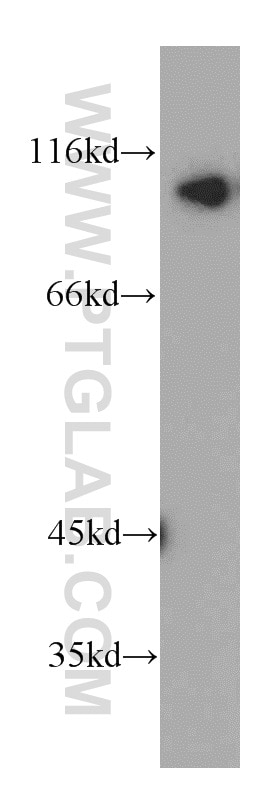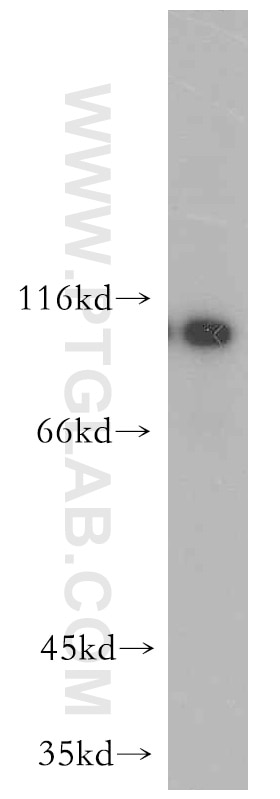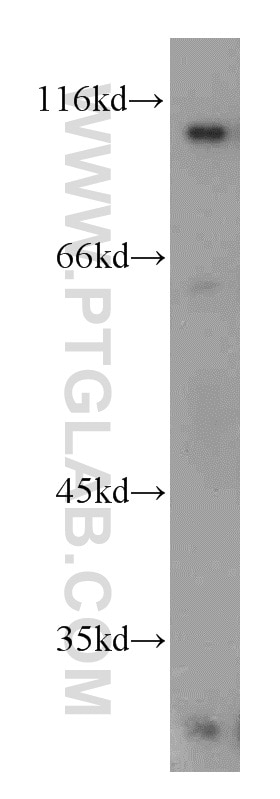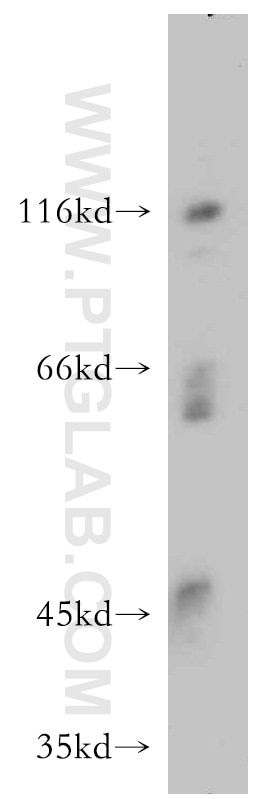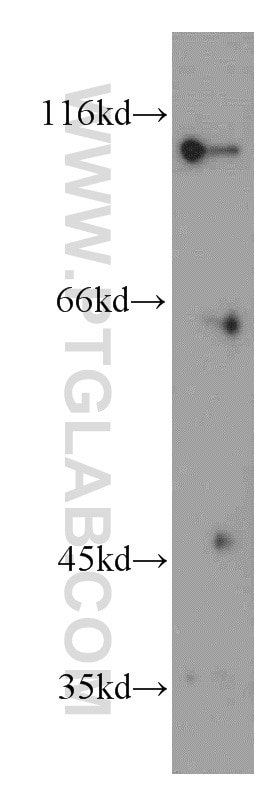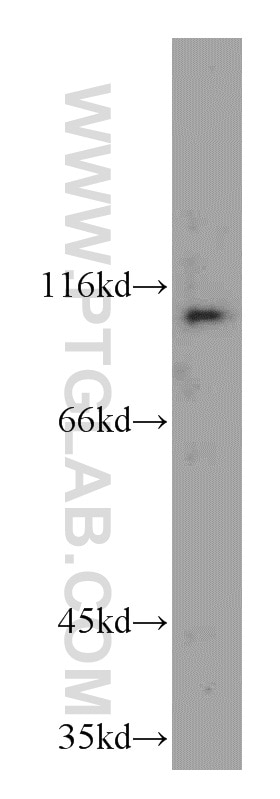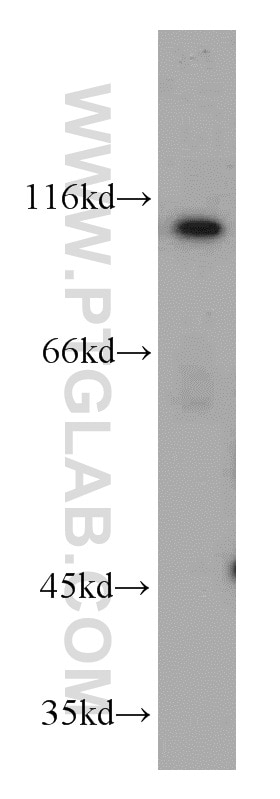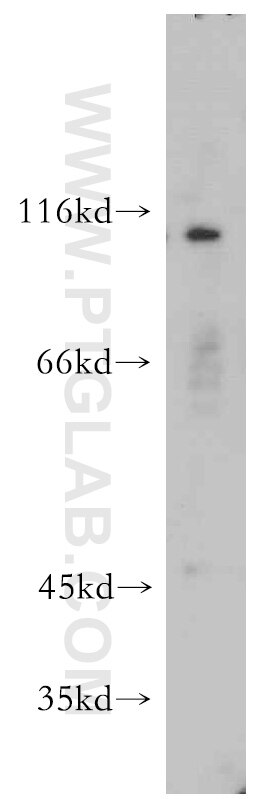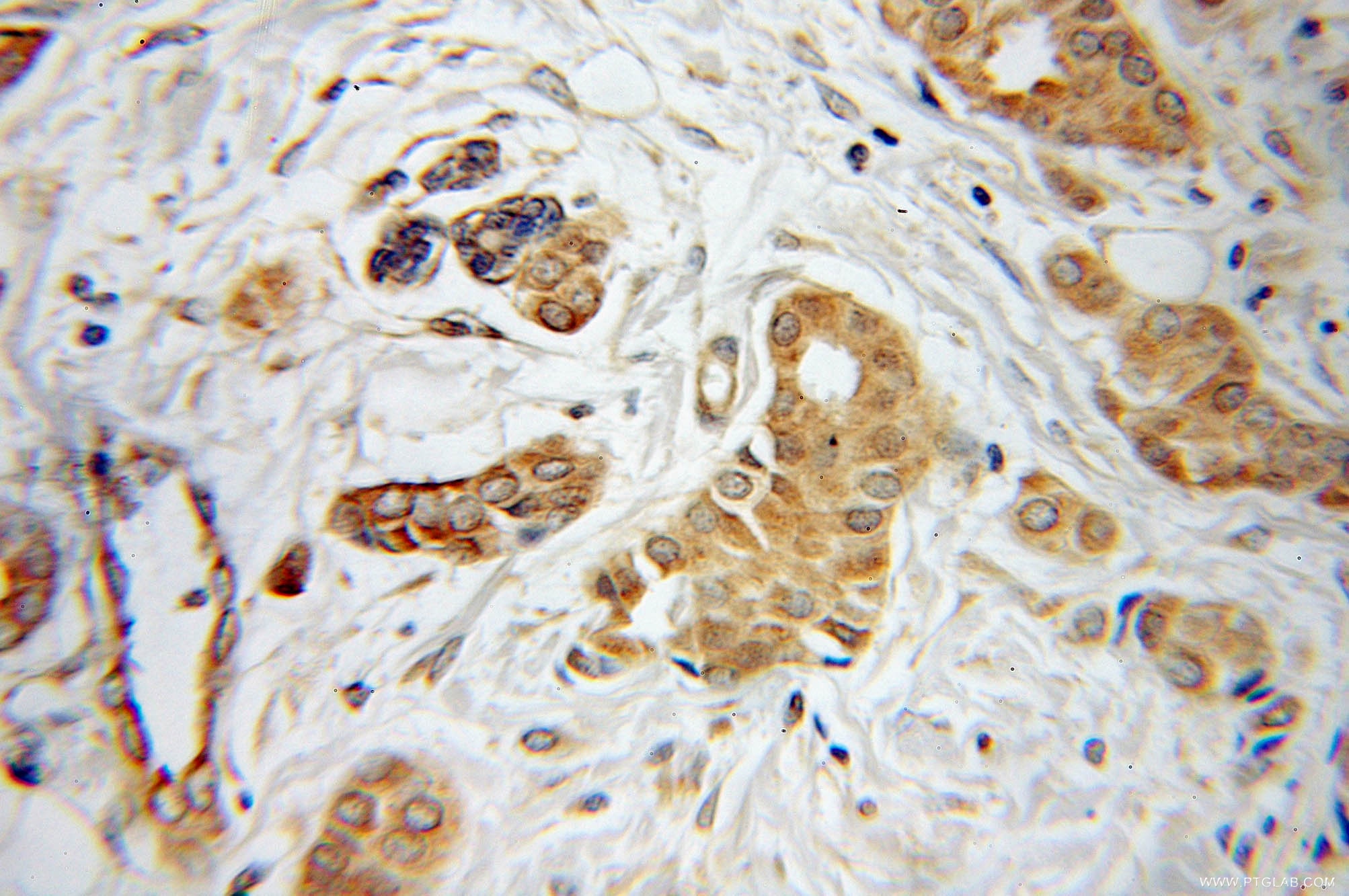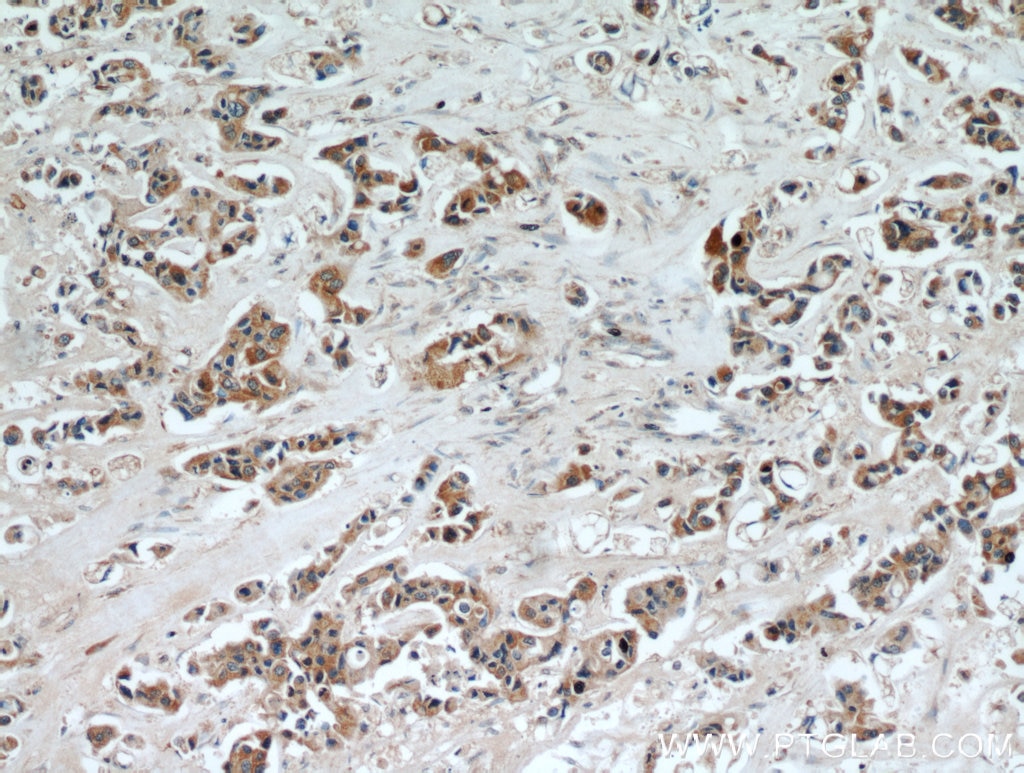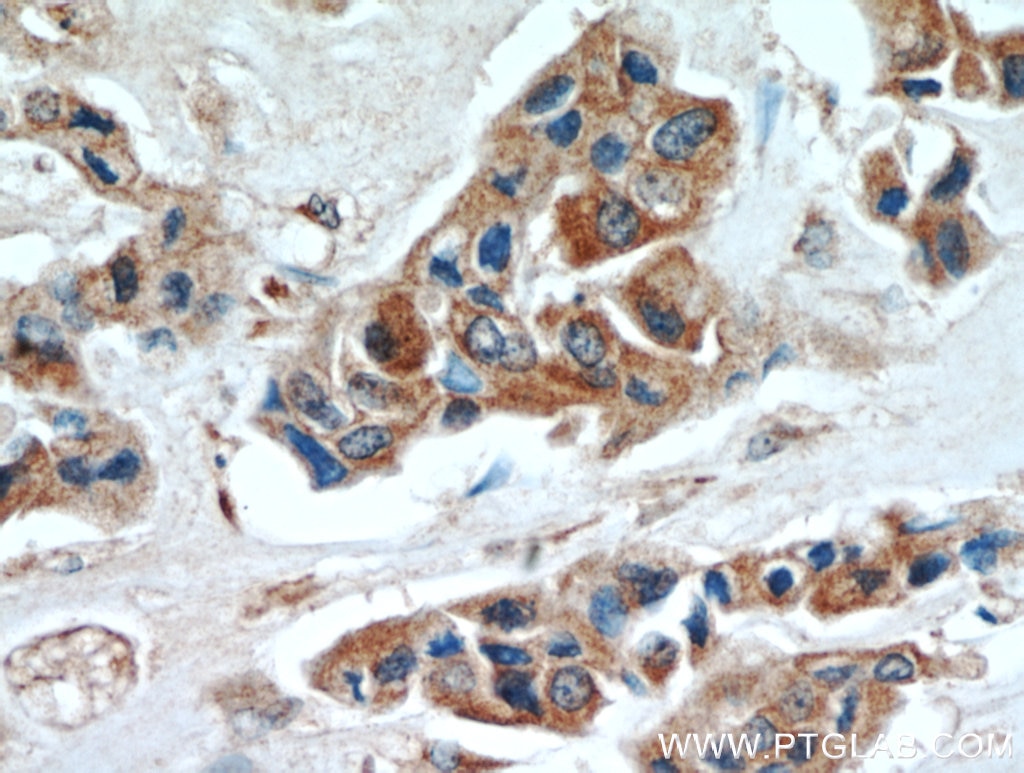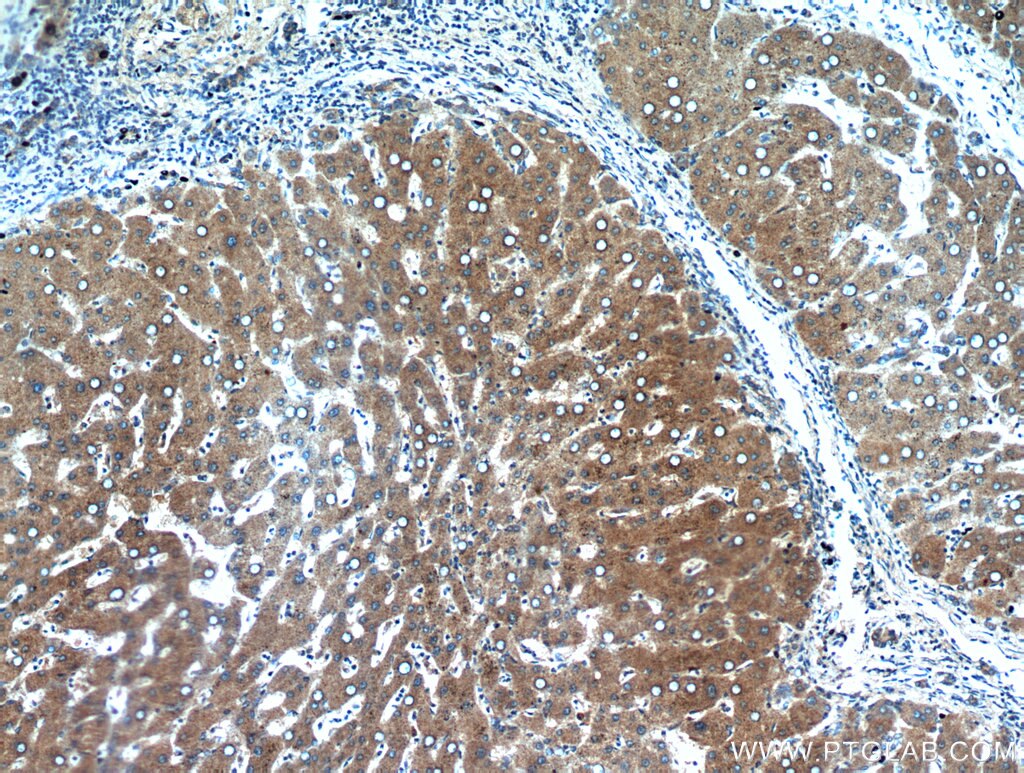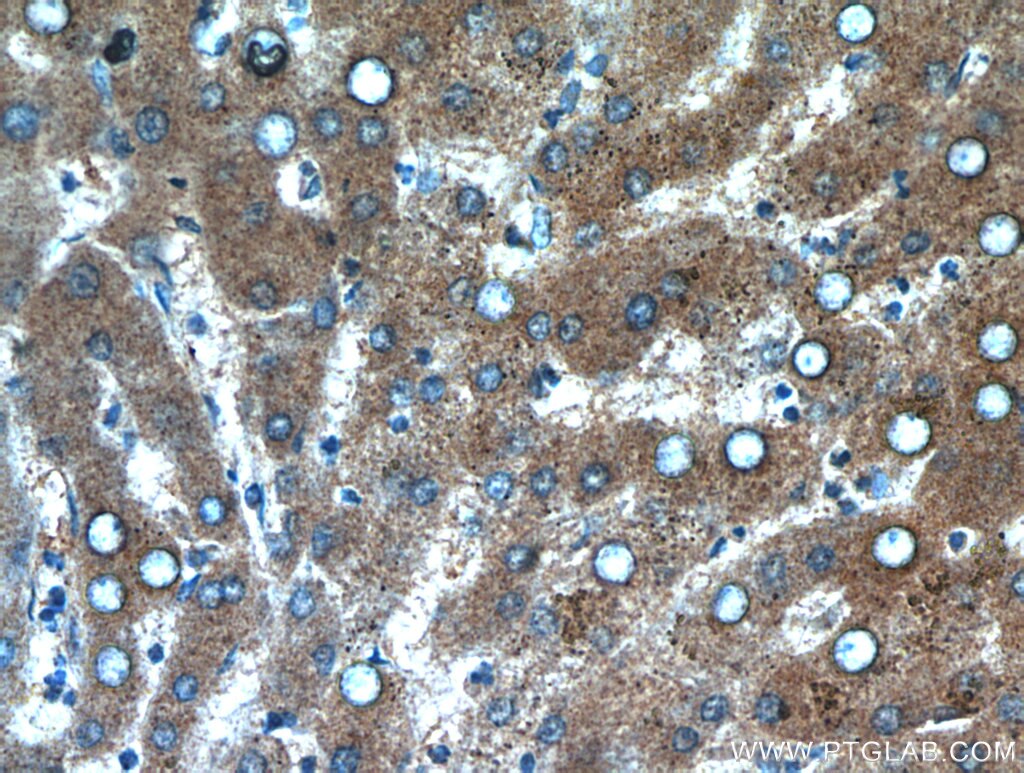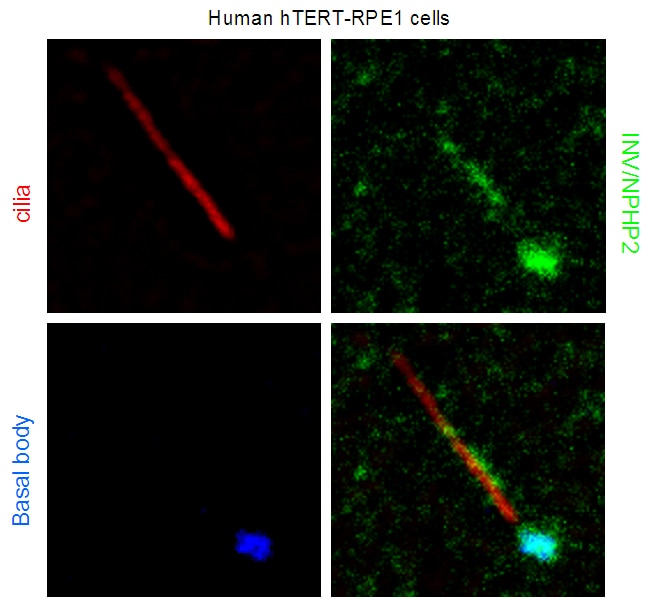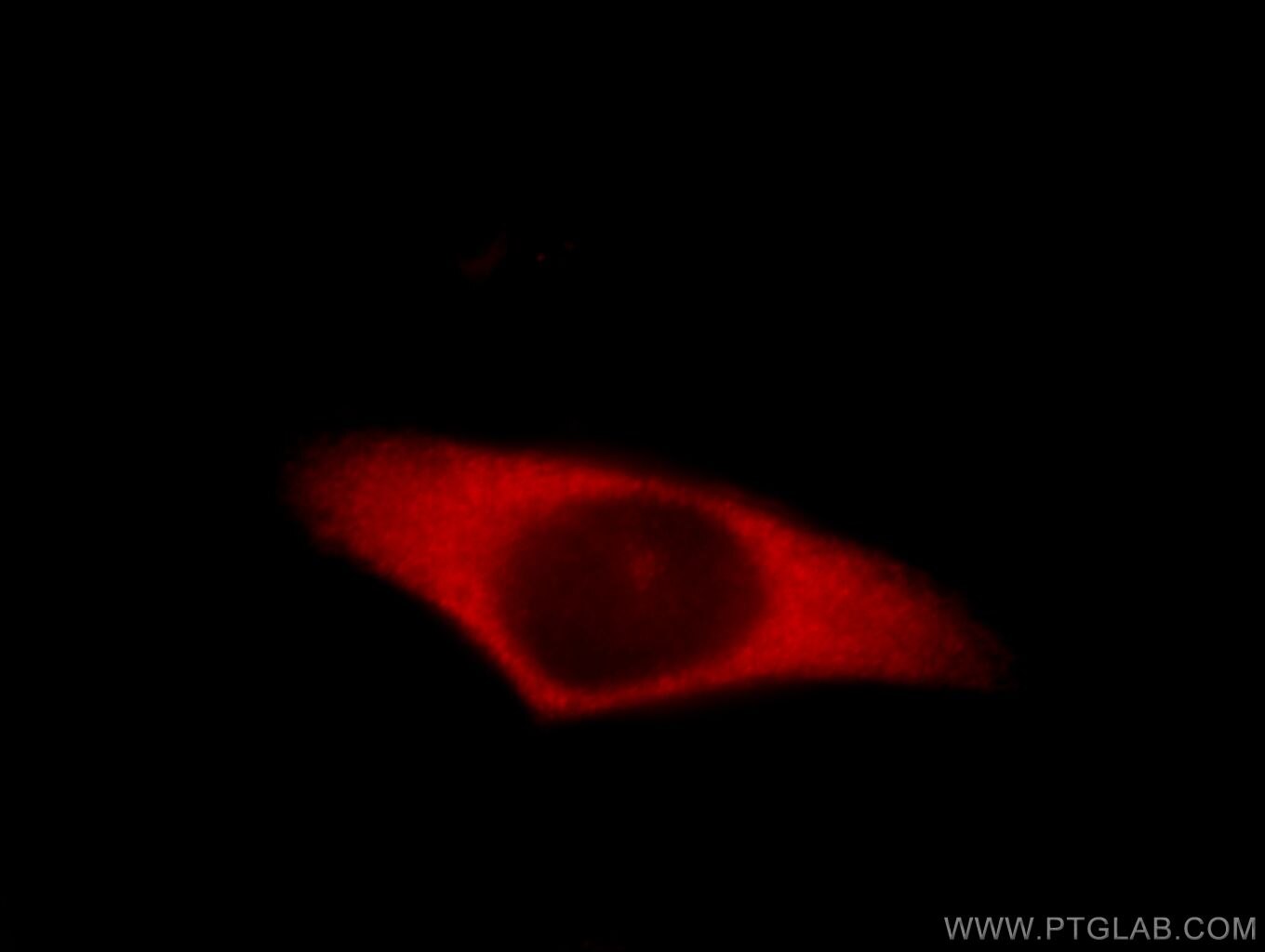- Phare
- Validé par KD/KO
Anticorps Polyclonal de lapin anti-INVS
INVS Polyclonal Antibody for WB, IF, IHC, ELISA
Hôte / Isotype
Lapin / IgG
Réactivité testée
Humain, rat, souris
Applications
WB, IF, FC, IHC, ELISA
Conjugaison
Non conjugué
N° de cat : 10585-1-AP
Synonymes
Galerie de données de validation
Applications testées
| Résultats positifs en WB | cellules MCF-7, cellules HepG2, cellules Jurkat, cellules K-562, cellules L02, cellules Raji, cellules SH-SY5Y, tissu de muscle squelettique de souris |
| Résultats positifs en IHC | tissu de cancer du sein humain, tissu de cirrhose hépatique humain il est suggéré de démasquer l'antigène avec un tampon de TE buffer pH 9.0; (*) À défaut, 'le démasquage de l'antigène peut être 'effectué avec un tampon citrate pH 6,0. |
| Résultats positifs en IF/ICC | cellules HeLa, cellules hTERT-RPE1 |
Dilution recommandée
| Application | Dilution |
|---|---|
| Western Blot (WB) | WB : 1:200-1:1000 |
| Immunohistochimie (IHC) | IHC : 1:20-1:200 |
| Immunofluorescence (IF)/ICC | IF/ICC : 1:10-1:100 |
| It is recommended that this reagent should be titrated in each testing system to obtain optimal results. | |
| Sample-dependent, check data in validation data gallery | |
Applications publiées
| KD/KO | See 2 publications below |
| WB | See 5 publications below |
| IHC | See 1 publications below |
| IF | See 4 publications below |
| FC | See 1 publications below |
Informations sur le produit
10585-1-AP cible INVS dans les applications de WB, IF, FC, IHC, ELISA et montre une réactivité avec des échantillons Humain, rat, souris
| Réactivité | Humain, rat, souris |
| Réactivité citée | rat, Humain, souris |
| Hôte / Isotype | Lapin / IgG |
| Clonalité | Polyclonal |
| Type | Anticorps |
| Immunogène | INVS Protéine recombinante Ag0934 |
| Nom complet | inversin |
| Masse moléculaire calculée | 118 kDa, 100 kDa |
| Poids moléculaire observé | 100-110 kDa |
| Numéro d’acquisition GenBank | BC006370 |
| Symbole du gène | INVS |
| Identification du gène (NCBI) | 27130 |
| Conjugaison | Non conjugué |
| Forme | Liquide |
| Méthode de purification | Purification par affinité contre l'antigène |
| Tampon de stockage | PBS with 0.02% sodium azide and 50% glycerol |
| Conditions de stockage | Stocker à -20°C. Stable pendant un an après l'expédition. L'aliquotage n'est pas nécessaire pour le stockage à -20oC Les 20ul contiennent 0,1% de BSA. |
Informations générales
INVS, short for inversin, plays a role in primary cilia function and involvement in the cell cycle. It is required for normal renal development and establishment of the left-right axis. INVS may be involved in Wnt signaling pathways by acting as a molecular switch between different them. Inhibits the canonical Wnt pathway by targeting cytoplasmic disheveled (DVL1) for degradation by the ubiquitin-proteasome. This suggests that it is required in renal development to oppose the repression of terminal differentiation of tubular epithelial cells by Wnt signaling. This antibody is a rabbit polyclonal antibody raised against part of the N-terminus of human INVS.
Protocole
| Product Specific Protocols | |
|---|---|
| WB protocol for INVS antibody 10585-1-AP | Download protocol |
| IHC protocol for INVS antibody 10585-1-AP | Download protocol |
| IF protocol for INVS antibody 10585-1-AP | Download protocol |
| Standard Protocols | |
|---|---|
| Click here to view our Standard Protocols |
Publications
| Species | Application | Title |
|---|---|---|
EMBO J Cell type-specific regulation of ciliary transition zone assembly in vertebrates.
| ||
Proc Natl Acad Sci U S A A complement factor H homolog, heparan sulfation, and syndecan maintain inversin compartment boundaries in C. elegans cilia. | ||
Endocrinology PCP protein inversin regulates testis function through changes in cytoskeletal organization of actin and microtubules.
| ||
Virchows Arch Afferent arteriolopathy and glomerular collapse but not segmental sclerosis induce tubular atrophy in old spontaneously hypertensive rats. | ||
Am J Med Genet A Early presentation of cystic kidneys in a family with a homozygous INVS mutation. | ||
